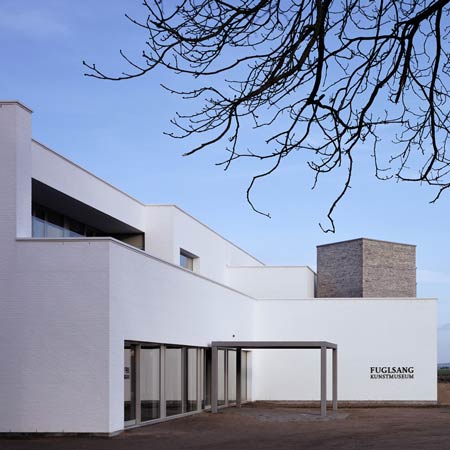
Fuglsang Kunstmuseum by Tony Fretton Architects
The new Fuglsang Kunstmuseum designed by Tony Fretton Architects has opened in Lolland, Denmark.
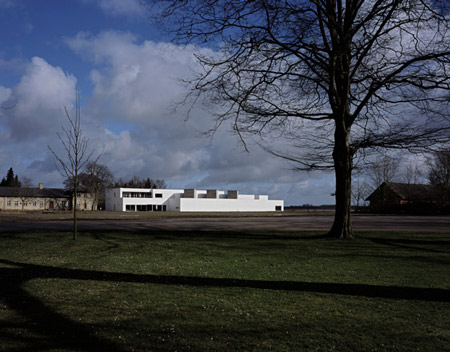
The art museum, set among farm buildings and surrounded by fields of the Fulsang agricultural estate, houses 19th century paintings and drawings.
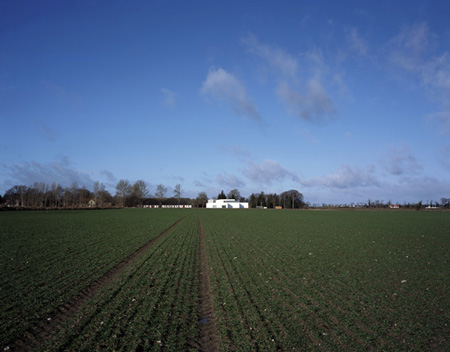
Here's some more information from Tony Fretton Architects:
--
Fuglsang Kunstmuseum, Lolland Denmark
Unlike the location of an urban museum that is reached through the room-like spaces of a city, to go to Fuglsang entails a long journey through open countryside, finally arriving on a long straight road through a loose assembly of buildings to a courtyard at the heart of the Estate.
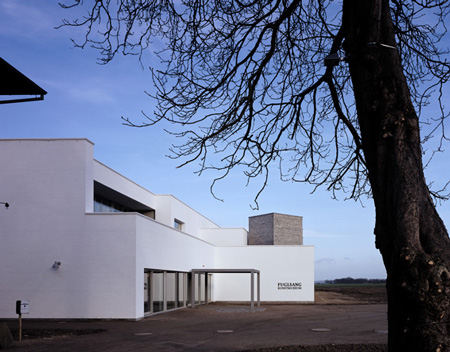
What would it mean to place a Museum, a new building of a different kind here, to bring visitors to it and to alter the landscape around it? These were questions that Torben Schønherr the landscape designer, Ebbe Wæhrens my colleague and executive architect and I asked ourselves when we first stood looking at Fuglsang.
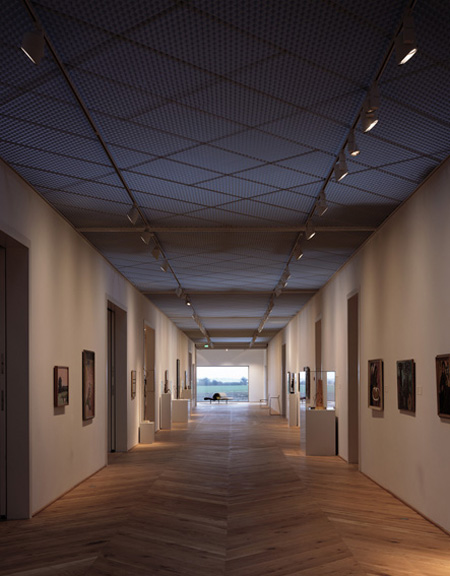
The Museum and its surroundings
The landscape and sea to the east had such significance that I felt that they should be the first thing that visitors saw as they came to the Museum.To leave the courtyard open to the view and place the Museum in line with the land steward’s house, pointing to the horizon was controversial. A strong suggestion had been made in the brief of the architectural competition by which we were selected, that the new Museum should reinstate the original form of the courtyard by enclosing its east side.
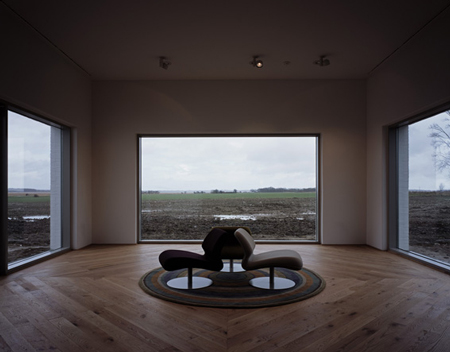
Instead, like the red barn and the forge, the Museum extends into the fields while having a strange axial but offset relation to the most significant of the buildings, the Manor House and its formal surroundings.
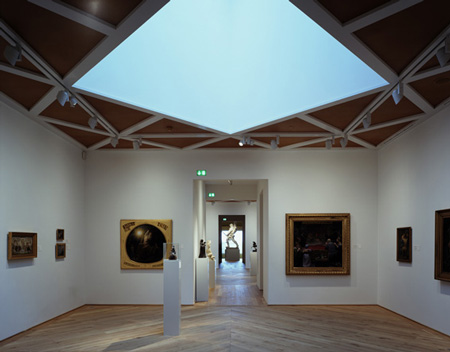
Connection between the two buildings is further established by the way that the Museum is first presented to visitors as a brick façade, the same length as the Manor House, with three diagonal roof lights above that relate to the three gables in the façade of the Manor House.
Like the buildings around the courtyard, and many classic works of Danish modernism, the facades of the Museum are constructed from brick. As in the barn on the west side of the court, they are painted white and the roof lights are in a grey brick the colour of the roofs of the buildings around it.
At the entrance to the Museum the façade steps back, making a place for visitors to gather at the edge of the courtyard. At this point the view of the land and sea is temporarily taken away and the Museum and visitors become the focus.
A canopy of painted metal in the form of an open sided cube, low and wide, provides shelter from the rain, and is matched by a glass wind lobby of equal scale and transparency in the entrance foyer within the building.
One end of the foyer is arranged as a café, the other as a bookshop and reception area, both of which look out through extensive windows to the courtyard on one side and the other into a public art studio and beautiful existing garden behind it. A glass door in the reception area shows the way to the library and offices on the first floor, and other doors indicate the lecture hall, toilets and place to hang your coat.
The foyer is a public place in which everything is where it can be found and enjoyed in the company of friends and strangers within the landscape and spaces of Fuglsang. From within it there is a line of sight to the long central gallery of the Museum, around which the other galleries are laid out, and along it to a view of the landscape and sea at its end that resembles the first narrow view seen when entering the Estate.
The galleries are very different in scale and character from the public space of the foyer and are places into which groups of visitors can spread out and immerse themselves in the collection, finding that it is arranged in three suites.
The first of these is to the right of the central gallery and consists of medium scale rooms arranged enfilade.Paintings from 1800-1900 are displayed in the first three rooms of the suite, which have ornamented ceilings and are lit by the diagonal roof lights that were seen above the façade. Further along is a room for works on paper, which for reasons of conservation is artificially lit. At the end is a gallery for plaster casts that is lit by a window looking out towards Sketjen.
Between the galleries are very small rooms, called pockets, where a few people can view a single work of art.On the opposite side of the corridor is a single, large, minimally detailed gallery for temporary exhibitions.Abstract and reconfigurable, daylight comes into this tall space through a diffusing ceiling of open metal grids, above which there is space to support suspended artworks and install projectors.
Further along on this side is the third suite, consisting of a plainly detailed top lit space that is configured with screens into four rooms. Here works of Modernism from the early to mid twentieth century will be hung, ranging from medium scale figurative works to large abstract canvases.
Connecting these spaces is the central gallery, which is neither simply an exhibition space nor a place of circulation. Couches could be interspersed with artworks in the classical manner or the whole space given over to an exhibition or an event. At the end is a room that seems like a gallery but has only windows giving views of the sea and landscape, which is intended as a place to rest and reflect.
The different characters of the galleries and public spaces developed empirically as we designed and they are bound together in a similar way to Fuglsang itself, where very different styles of buildings and spaces are connected by simple similarities.
In this way, and through the loss and recovery of the view of landscape and sea that occurs within the Museum, some underlying qualities of the locale are introduced to the quiet, top lit exhibition spaces of the interior. Our intention is for the Museum to be filled with slight differences that are stimulating but unobtrusive, so the art not the building predominates, and for there to be a combination of familiarity and emptiness that allows the building to become the imaginative property of those who come to it.